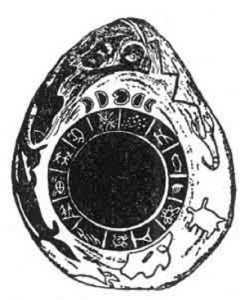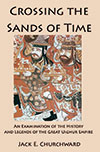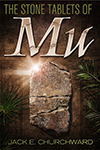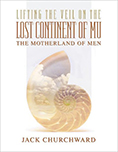The conclusion of the examination of the Mound Builder’s Calendar Stone that appears on page 230 of the 1932 Sacred Symbols of Mu by my great-grandfather, James Churchward, continues with the response I received from the National Park Service.

From Sacred Symbols of Mu
A Mound Builder’s Calendar Stone Found in the Ouachita River, Hot Springs, Arkansas
From Col. J. R. Fordyce, Little Rock, Arkansas
Links to Examining the ‘Mound Builder’s Calendar Stone’ parts One, Two, Three, Four, Five, Six.
Again I must reiterate that Tom Hill, Curator of the Hot Springs National Park, was extremely helpful and provided some excellent references about the artifact in question. Some of the references were discussed in Part 5.
Additionally, Mr Hill pointed me to the book Didn’t All the Indians Come Here: Separating Fact from Fiction at Hot Springs National Park by Mark Blaeuer. The book contains a copy of a photograph of the artifact and devotes a few pages to the discussion of the item.
In Mr. Blaeuer’s book, the artifact is known as the Arkansas Calendar Stone and the text mentions that no one has reliably recorded when the object was “found.” (quotes from original) Other facts gleamed from the book include that the stone may have been made of quartzite and that Fordyce may have had two such stones in his collection. The one ‘almost perfectly round’ found it’s way into the storage area for the Arkansas Museum of Science and History in Little Rock and the other ‘pear-shaped’ stone was sold to a lady in Houston, Texas.
Mr. Blaeuer also specifically addresses James Churchward’s use of the stone, labeling his books as ‘thoroughly unscientific’ and the artifact as ‘of dubious authenticity.’ Additionally, he also mentions speculation about the stone on the internet, such as the Manataka version (discussed here,) and other links that I did not find in my search, such as
Another website’s article contains a sequence of diagrams purporting to show the connection of the stone to “The Great Pyramid of Giza,” “The Light Cones of Relativity,” “The Great Pyramid’s ‘invisible’ twin created by the full extension of the of the Pi dimension”, and “The completed ‘hourglass’ of Orion’s Belt.” Both articles reproduce what appears to be Churchward’s drawing of the pear-shaped stone.
The bottom line about the stone is in this quote from Samuel Dickenson, who knew Fordyce personally and would have had ample opportunity to examine the stone:
Yes, your photograph is of the fake calendar stone which so intrigued Colonel Fordyce and numerous other people. The interest that the New York Times article excited shows how eager people are to believe the irrational. The stone itself looked newly carved.”
So, whether it is called the “Mound Builder’s Calendar Stone,” “Washita Calendar Stone,” “Manataka Stone,” or the “Arkansas Calendar Stone,” apparently quite a few folks have been been led down a path of fraud and deception. This does not mean that any of these people were involved in creating the fraudulent artifact, however, one must suspect their interpretations since the item was manufactured in the late 19th or early 20th century and was not, as they previously believed, an ancient artifact.
Have a great day.








 RSS - Posts
RSS - Posts